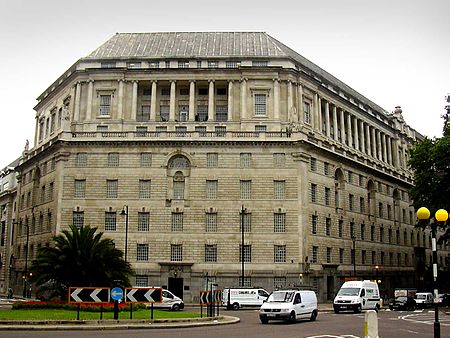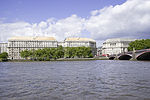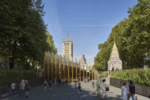Imperial Chemical House

Imperial Chemical House is a Grade II listed building situated on Millbank, London, England, near the west end of Lambeth Bridge. It was designed by Sir Frank Baines in the neoclassical style of the inter-war years, and constructed between 1927 and 1929 as the headquarters for the newly created Imperial Chemical Industries (ICI). Thames House, the next building south along Millbank, across Horseferry Road, was also designed by Baines and constructed at the same time. Both buildings were built to house offices for the newly formed ICI, created in 1926 after the mergers of Nobel Industries, United Alkali, British Dyestuffs and Brunner Mond. The buildings were completed in the aftermath of the 1928 Thames flood, and Lambeth Bridge was also replaced. Imperial Chemical House was divided in 1987 to create Norwest House at 9 Millbank, and Nobel House at 17 Smith Square. ICI moved out in the 1990s.
Excerpt from the Wikipedia article Imperial Chemical House (License: CC BY-SA 3.0, Authors, Images).Imperial Chemical House
Millbank, City of Westminster Millbank
Geographical coordinates (GPS) Address External links Nearby Places Show on map
Geographical coordinates (GPS)
| Latitude | Longitude |
|---|---|
| N 51.495 ° | E -0.12561111111111 ° |
Address
Norwest House
Millbank
SW1P 3JH City of Westminster, Millbank
England, United Kingdom
Open on Google Maps










